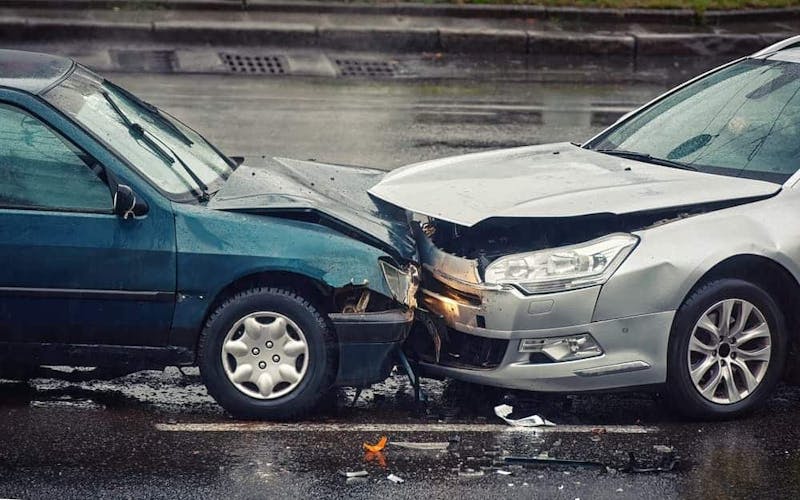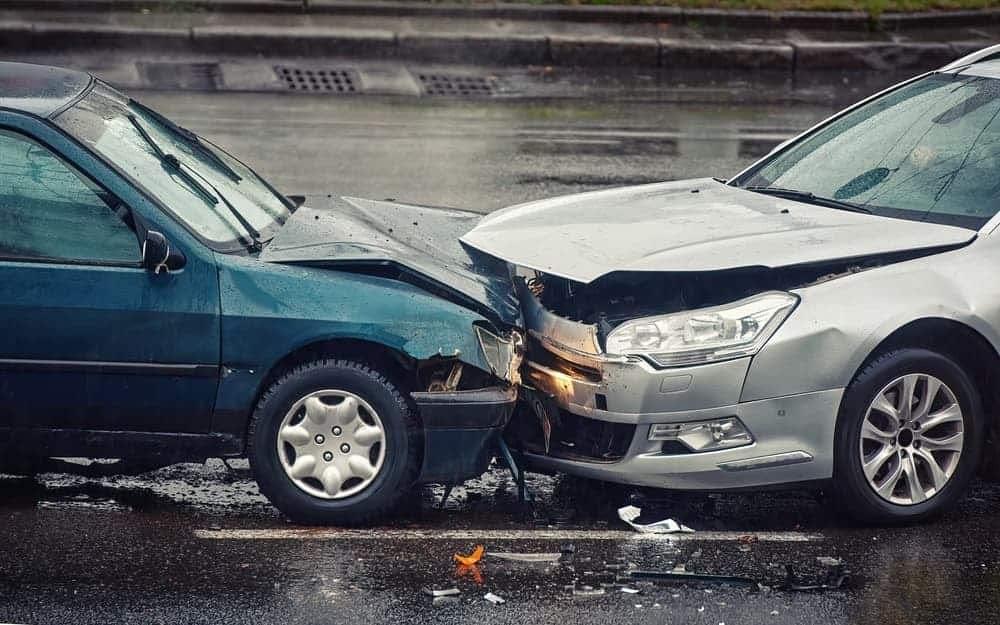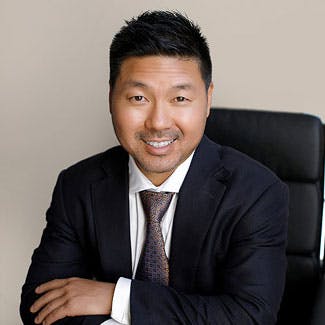
A head-on collision is one of the deadliest types of car accidents. It can occur when two vehicles crash as they move directly toward each other or when a vehicle runs into a stationary object like a wall or street lamp.
A driver going the wrong way down a road, drifting over the center lane, improper signage, poorly designed roads, or bad weather can cause head-on collisions. Fatigued, intoxicated, or distracted drivers might cause head-on collisions.
Knowing what caused your head-on car crash can help you figure out what to do afterward. If you or your passengers were badly injured and want to seek compensation, a car accident lawyer can determine liability.
Head-On Collisions Are Exceptionally Dangerous
According to the U.S. Department of Transportation, vehicle head-on collisions cause nearly 14 percent of all traffic fatalities yearly.
Head-on car crashes can flip or roll colliding vehicles over. They can crash into other cars, pedestrians, cyclists, or anything in their path.
The force of the impact is also so great that it can completely destroy the vehicle’s front end. The faster the vehicles travel when they collide, the more deadly the accident.
When two vehicles collide head-on, it can lead to severe injuries for the driver and passengers.
The most common injuries that result from head-on collisions are:
- Whiplash
- Spinal cord injuries
- Traumatic brain injuries (TBI)
- Blunt force trauma
- Internal organ damage
- Broken bones
- Burns and scarring
Traumatic Brain Injuries and Concussions
TBI is a common injury after a head-on collision. It’s also the leading cause of disability in people under 40. TBI is an injury caused by a blow or jolt to the head.

An object that strikes the head can cause bruising, bleeding, and tearing in the brain. Sometimes, the skull can fracture.
A TBI may require emergency room or intensive care unit care. Bleeding or swelling in the brain may require emergency surgery.
For some TBI patients, recovery doesn’t come until years after the injury. Sometimes the brain injury is permanent.
Whiplash
In a head-on collision, the head and neck move forward while the body stays in place. This is known as whiplash. It can stretch and tear the ligaments and muscles in the neck and back.
Some of the most common symptoms associated with whiplash are:
- Headaches
- Dizziness
- Shoulder, neck, and back pain
- Numbness
- Weakness
- Blurred vision
Symptoms may last for months, years, or the rest of your life.
After a head-on collision, visit a doctor. You may not have any serious injuries or notice anything wrong right away. You may have sustained an injury, though. You won’t know for sure unless a physician examines you. Getting a doctor’s evaluation right after the accident will also help you later when trying to establish liability for the accident.
Psychological Damage
Some head-on accidents lead to psychological damage. One common example is post-traumatic stress disorder (PTSD). People with PTSD may fail to recover psychologically after experiencing a terrifying event.
Symptoms of PTSD after a head-on vehicle accident can include:
- Intrusive thoughts about the accident
- Distressing dreams about the accident
- Flashbacks
- Reluctance or refusal to drive again
- Actively avoiding thoughts about the accident
- Reduced or absence of emotions
- Feeling detached from others
- Being easily startled
- Irritability
- Disturbed sleep
Treating PTSD may require seeing a counselor, psychologist, or other mental health professional. Recovery from PTSD after a car accident can take weeks or months, depending on the patient. If it goes untreated, PTSD symptoms following a head-on collision can last years.
Property Damage
In addition to terrible injuries, head-on car crashes can lead to significant property damage. The cars involved in a head-on collision are often totaled, but not always. Still, the cost of repairing a vehicle can be high.
The average cost of repairing your car after an accident varies based on your make and model.
After a head-on collision, you can expect to pay:
- Seat belt repair: $150 to $200
- Windshield crack repair: $20 to $325
- Window replacement: $250 to $450
- Windshield replacement: $200 to $400
- Bumper repair or replacement: $100 to $2,000
The costs of repair to your vehicle add up quickly. When you compound those expenses with your hospital bills, you will pay thousands of dollars. A personal injury attorney can help you find a way to pay all your bills and get your life back on track.
What to Do After a Head-On Collision
You should document what happened in the days and weeks following the head-on collision. If you were involved in the accident, it’s possible you required medical attention right away. You may not have been able to stay on the scene to gather evidence, take photos, or speak with the other drivers. If you’re still in recovery after the crash, a family member or friend should take on the task of documenting the accident.
1. Write Down What Happened
When you’re well enough, write down as much as you can remember about the accident. You can even make an audio or video recording of yourself. Provide as much detail as you can.
Include:
- How fast you were going
- Which lane of traffic you were in
- What was happening in your vehicle then (if you were listening to music, talking with passengers, etc.)
- The weather conditions
- Road signs you remember seeing
- Confusion you remember having about road conditions, signage, or anything else
- What type of road you were on (two-lane, four-lane, etc.)
- Daytime or nighttime
Try to create a narrative of the accident as soon as possible afterward. The longer you wait, the less reliable your memories are.
2. Seek Medical Attention
If you weren’t hospitalized after the accident, you should still see your doctor for a checkup. Injuries like TBI and whiplash often show symptoms much later after the event occurred. Even if you feel well, get checked out.
3. Make Arrangements for Work and Childcare
You may have been badly injured after your accident and have to recover for a long time. For many, this means being unable to work or care for their children. Make childcare arrangements as soon as possible, or have a family member do it for you.
Contact your employer as soon as possible and let them know about the accident and your recovery. Have an attorney help you deal with the aftermath of your accident; they can advise you on what to do about your work situation.
4. Determine Fault and File an Insurance Claim
The next step is filing an insurance claim for the accident. In Washington, the person responsible for the accident must use their insurance company to pay full compensation to the injured parties. If another driver causes your accident, their insurance will have to pay.
However, figuring out who was at fault and getting the insurance company to compensate you is not a simple process. If you want to get the compensation you need to help pay for your medical and other expenses, you need a lawyer’s help.
Filing an Insurance Claim After a Head-On Collision
Who is at fault in a head-on car crash? Usually, one of the drivers is responsible. They might be intoxicated, fatigued, or distracted, drift out of their lane, or turn the wrong way down a street. If you can prove the other driver was at fault, you can submit a claim with their insurance company.
The other party’s insurer might contest your claim if they disagree that the other driver was responsible. Your expenses might also exceed the other driver’s policy limits. When that happens, you may have to file a lawsuit to get the compensation you deserve.
It’s also possible that the municipality is at fault if there was improper signage or a poorly-designed road where the crash happened.
The Claims Process
Hire a personal injury lawyer to help you determine who was at fault and deal with the insurance company. They can gather evidence and documentation to prove the responsible party was at fault. They can recover compensation for your injuries or damaged vehicle.
The process typically goes through four steps once you submit a claim for your head-on collision.
1. Initial Filing
The initial claim usually gets filed after you conclude your medical treatment. Our team can request your medical records and include them in the claim you send to the insurance company.
2. Settlement Negotiation
Once the insurance company reviews the claim, negotiations start. The insurer will make a compensation offer to you, and your personal injury lawyers will send one to them. You do not have to take the offer from the insurance company if you don’t think it’s adequate. An attorney can help you determine a reasonable settlement amount.
3. Denial of Claim
If you and the insurance company cannot agree upon a settlement, they may deny your claim. At this point, you may have to file a lawsuit.
4. Lawsuit
Filing a lawsuit might be the only way for you to get the compensation you deserve. Lawsuits can be long processes, taking several months before being resolved. Often, personal injury lawsuits end with a settlement, so there’s no need to go to court. Some cases do end up at trial, however. If you have to go to court for your head-on collision lawsuit, your attorney can represent you.

Have an empathetic and supportive personal injury attorney guide you through the complex process after a head-on collision. Let your attorney focus on the legal side while you work on recovery.












